Dear Friends, It has been a year that I have reported on our conservation work on lakes Malawi and Tanganyika. I was at Lake Tanganyika last October and there are some developments in the southern part of Lake Malawi to report on. |
|
Chris and Louise Horsfall are still actively breeding Tropheus duboisi “Maswa” and Tropheus moorii “Tanzania Murago”. For the second time in the last three years the adults of the Maswa breeding group suddenly died while the juveniles in the same vat with them survived. We now think that the temperature of the water in the vat shot up too high depleting the oxygen in the vat’s water. Although there is a daily exchange of water from the lake, the pump’s intake is in the shallows where the temperature can be noticeably higher than at deeper levels where T. duboisi used to live. Also one side of the vats was exposed to the afternoon sun which also may have increased the temperature, but is now shielded by canvas and straw mats during the hot season. Chris recently told me that the Maswas seem to be doing fine and that the surviving juveniles from last year’s disaster are now ready to breed. There were no losses in the vats with the Murago Moorii which may have a higher tolerance of warm, oxygen-poor water. The numbers of each species currently (25 Aug 2022) is 94 for the T. duboisi and 437 for the Murago Moorii. |
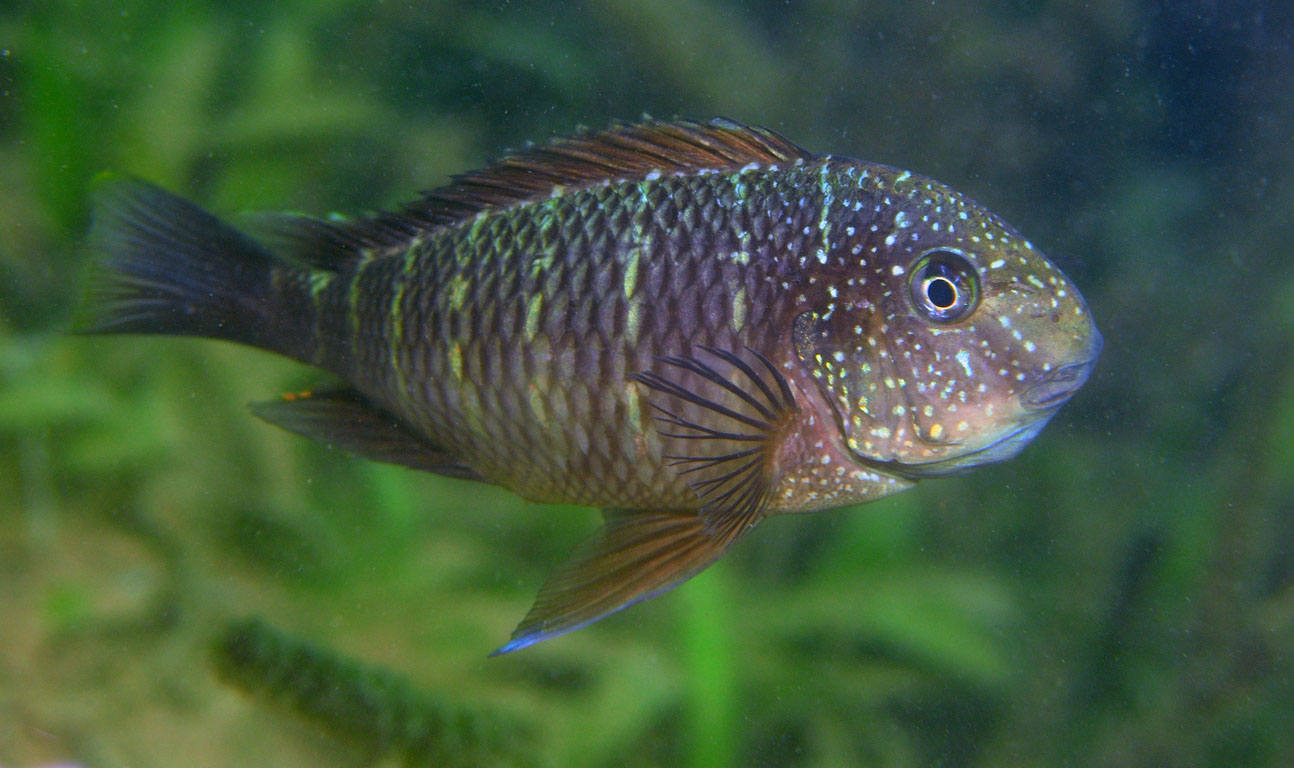 A mouthbrooding female of Tropheus moorii Murago Tanzania, photographed on Sep. 8th, 2021 at Wampembe A mouthbrooding female of Tropheus moorii Murago Tanzania, photographed on Sep. 8th, 2021 at Wampembe |
While we were at the lake last October we wanted to do a survey of the Ophthalmotilapia boops “Neon” at Nkondwe Island and the Murago Moorii at Wampembe. Very uncommon for the time of year there was a dense algae bloom at Kipili which extended all the way to the shores of the Mahale Mountains. This had us cut short our northern trip and hoped for clearer water south of Kipili. At Wampembe the water was reasonably clear and the three of us (Pam Chin, Enea Parimbelli, and I) tried to assess the density of the T. moorii “Tanzania Murago” which we all agreed was close to a “normal” density what could be expected of a T. moorii population. I swam about 75 meters till I had counted 50 adult Muragos. However, about a month later an official survey conducted by the governmental institutions NEMC (National Environment Management Council) and TAFIRI (Tanzanian Fisheries Research Institute) found that there were only 154 Tanzania Murago left in the entire population (about 700 meter shoreline). It is possible that a collector had made a large collection in the few weeks in between or we were diving in a spot where the population still seemed healthy. Also surprising was that they counted only 54 male O. boops around Nkondwe Island which should have been 10 times as many for a healthy population. We did dive there early October but the visibility was less than 50 cm because of the algae bloom. Another species of concern is the so-called Firefry Tropheus, the deep-living T. brichardi that shares the rocky habitat with T. moorii at Mtosi. We did dive there last October and I found just a single adult and two juveniles. The survey of NEMC resulted in just 15 specimens in the entire Mtosi Bay! |
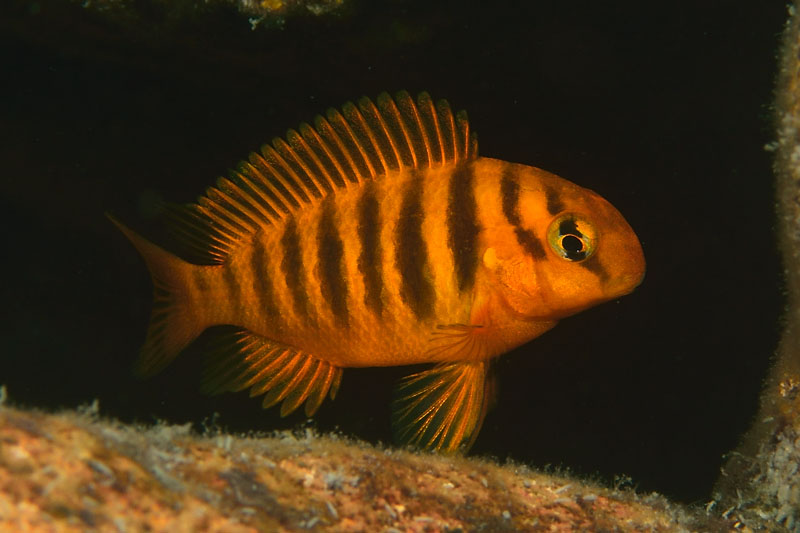 A juvenile of Tropheus brichardi Fire-Fry, photographed on Sep. 9th, 2021 at Mtosi A juvenile of Tropheus brichardi Fire-Fry, photographed on Sep. 9th, 2021 at Mtosi |
The money to perform this survey was raised by the Horsfalls with a very important input from the German Zoological Society for the Conservation of Species and Populations (ZGAP —Zoologische Gesellschaft für Arten- und Populationsschutz). The function of the Tanzanian NEMC (right-click and hit translate, unless you are fluent in Swahili) is to undertake environmental enforcement, compliance, review and monitor environmental impact statements, research and to raise awareness. After the teams left Lakeshore Lodge early December, Chris and Louise shared with me their conclusions and recommendations: In their (NEMC) proposal they are going to recommend that the Government start to regulate the number of each species that is extracted as well as which sex. They are going to recommend that there is a quota system whereby the extractor companies as a whole are not able to take more than a sustainable number of the cichlids. They are also going to recommend that the local villagers become custodians of the cichlids in their area. That the individual villages oversee the extraction process, that the individual villages collect payments from the extractor boats so that they have a direct benefit and a reason to protect their cichlids. No further actions/recommendations have been reported so far. Another encouraging development is the founding of the NGO SUSTAIN LAKE TANGANYIKA by Chris and Louise Horsfall. The NGO is committed to safeguarding the Lake Tanganyika ecosystem whilst improving the welfare of her local communities. They started already several different projects towards that goal. 1. Protecting the most important biodiversity hotspots of Lake Tanganyika—they start with making Nkondwe Island a no-fishing spot. Our Fund has recently sent $2000 in support of this project. |
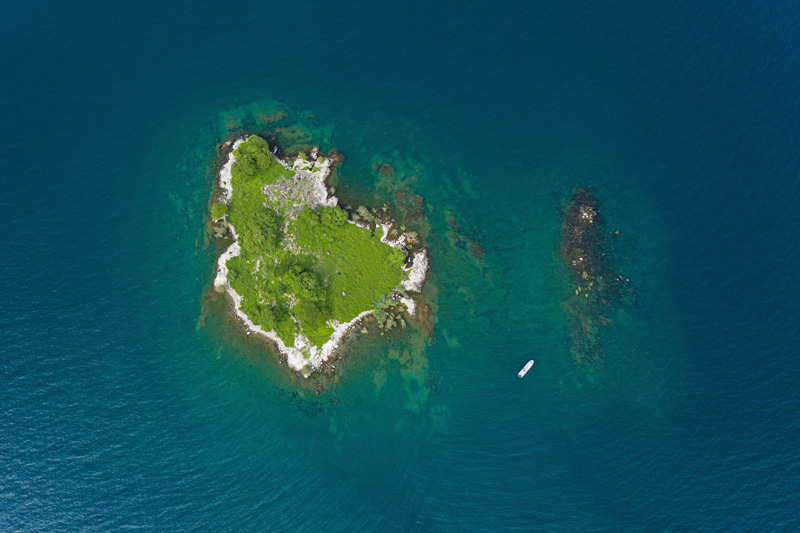 An aerial view of Nkondwe Island. Photo by Shibumi Films. An aerial view of Nkondwe Island. Photo by Shibumi Films. |
2. Breeding the most endangered cichlids to offer exporters an alternative to wild caught cichlids for sale to the aquarium trade. What they have been doing the last 4-5 years with three endangered species they want to expand to at least 10 species of concern. 3. Starting an aquahub growing Lake Tanganyika tilapia (Oreochromis tanganicae) with a hatchery, food processing machine, and training facility. Thus offering a more dependable and sustainable food source whilst providing fingerlings, fish food, and training to local entrepreneur fish farmers. See photos of their operation here. |
On July 21st the Lake Malawi National Park demarcated the 100 m protected no-fishing zone around the Nkhudzi Headland part of the park with red buoys. A few days later a similar demarcation was put in place on the other side of the Nankumba Peninsula, near Msaka and Otter Point. This is an important step in the right direction but the demarcation will only be effective if it coincides with proper instruction to local fishermen and most of all to the many illegal trawlers. Now that the no-fishing zone is properly demarcated it is simple to tell whether they fish in the forbidden zone or not. Unfortunately, even after the publication of the corruption of village chiefs and fisheries officials (see article here) and their involvement with the illegal fish activities, they continue to happen on a daily basis. Now it appears that some of the vessels have obscured their names so that they cannot be identified. |
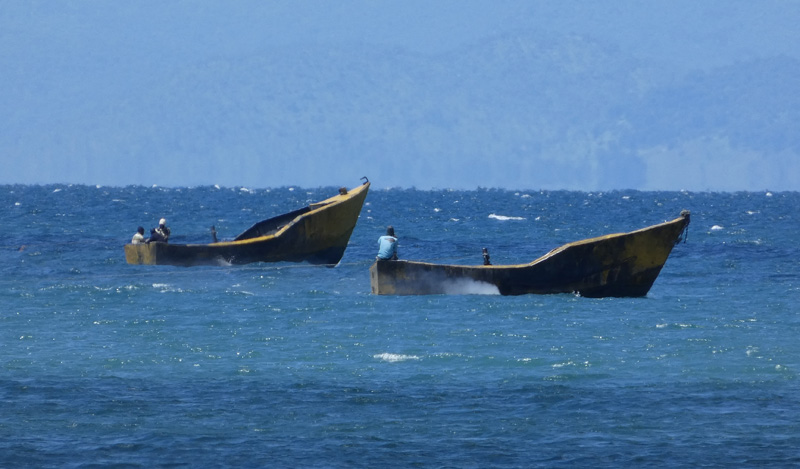 One of the many pair trawlers that devastate the lake's fish population on a daily basis. One of the many pair trawlers that devastate the lake's fish population on a daily basis.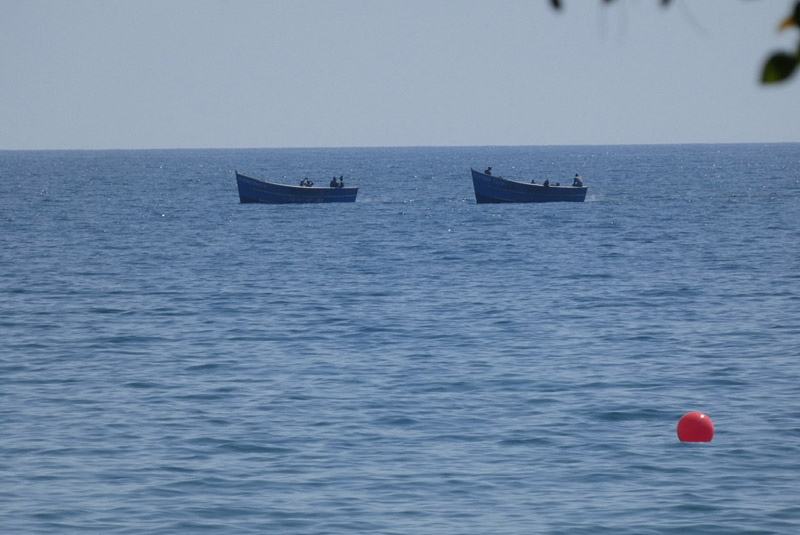 Another pair trawler with one of the demarcation buoys in the foreground. Another pair trawler with one of the demarcation buoys in the foreground.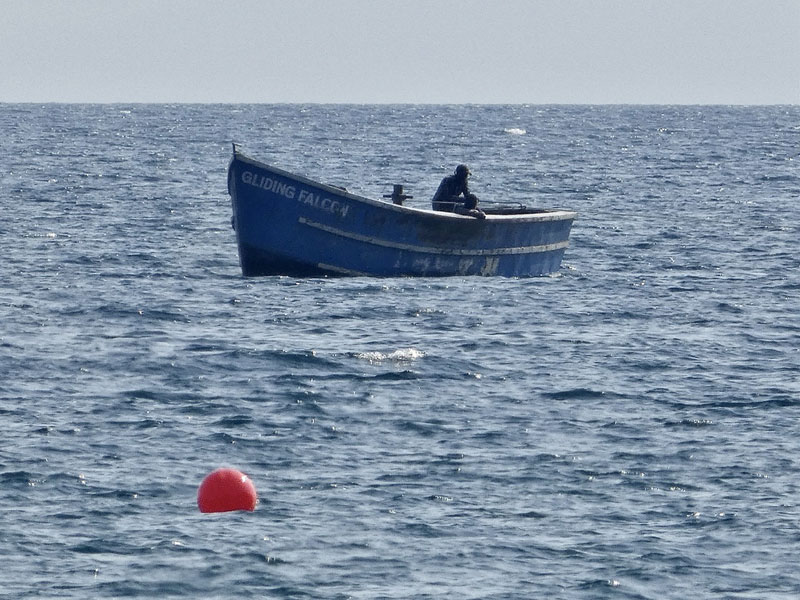 A trawler in shallow water within meters of the no-fishing zone. A trawler in shallow water within meters of the no-fishing zone.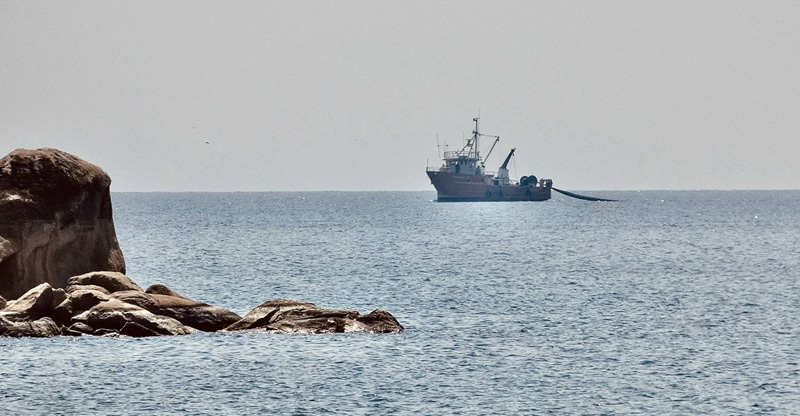 The huge R.V. Ndunduma, officially a research vessel of Fisheries, but trawling on an almost daily basis for the lucrative sale of fish. Although the vessel is based in Monkey Bay no fresh fish, apart from some Usipa, is available in the local markets there. Their catch is more valuable in the bigger cities like Lilongwe and Blantyre. Photos by George Mkondiwa. The huge R.V. Ndunduma, officially a research vessel of Fisheries, but trawling on an almost daily basis for the lucrative sale of fish. Although the vessel is based in Monkey Bay no fresh fish, apart from some Usipa, is available in the local markets there. Their catch is more valuable in the bigger cities like Lilongwe and Blantyre. Photos by George Mkondiwa. |
It is really disheartening to hear about this situation, and I believe little can be done to this government-backed trawling activity. I thought I had seen the last pair trawlers (two larger boats in tandem with a huge trawl net in between them) in the late 1980s, early 1990s because they had wiped out most populations of sand-dwelling cichlids in the southeastern arm of the lake. With the population growth pressure and increasingly corrupt authorities, pair-trawling has again taken a devastating swipe at the fish of Lake Malawi. The nets now being used have a maze size of less than 1cm. Even so, most fish have already been extracted by these pair trawlers and instead of hauling in a net every hour they now need to let it drag the lake bottom for 4-5 hours. Another piece of concern is the fact that Chinese “businessmen” continue to subcontract local fishermen not only for fish but also to sell them turtles and that this is not just happening all along the lake but going on in Monkey Bay and surroundings as well. They also reportedly buy anything else — snakes, lizards, crocodiles, crabs, mussels, birds, insects, and of course pangolin. Geoff Furber of Ripple Africa had another victory in protecting Malawi cichlids (and safeguarding future fish for the communities living around the lake) with the signing of Fisheries Bylaws in Salima District on May 7 this year. See a pdf of the bylaws here. A few photos of the signing ceremony and the newspaper report follow below. |
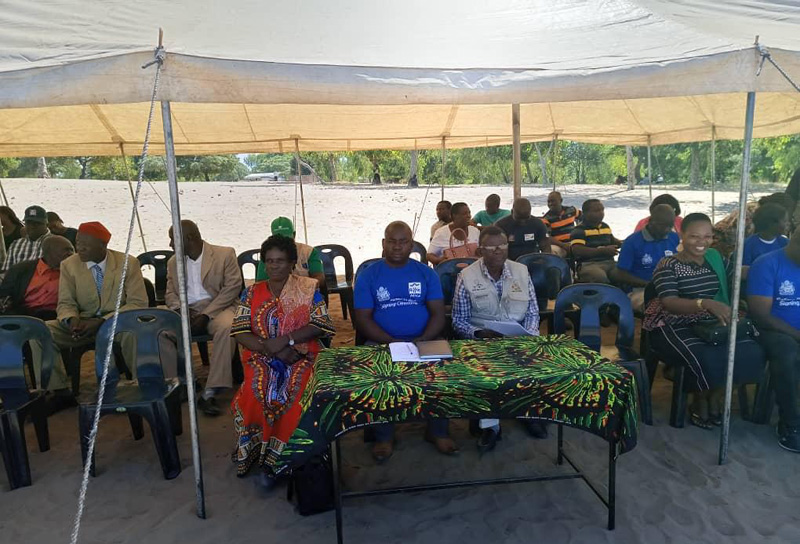 Dignitaries and community shareholders at the signing of the fisheries bylaws Dignitaries and community shareholders at the signing of the fisheries bylaws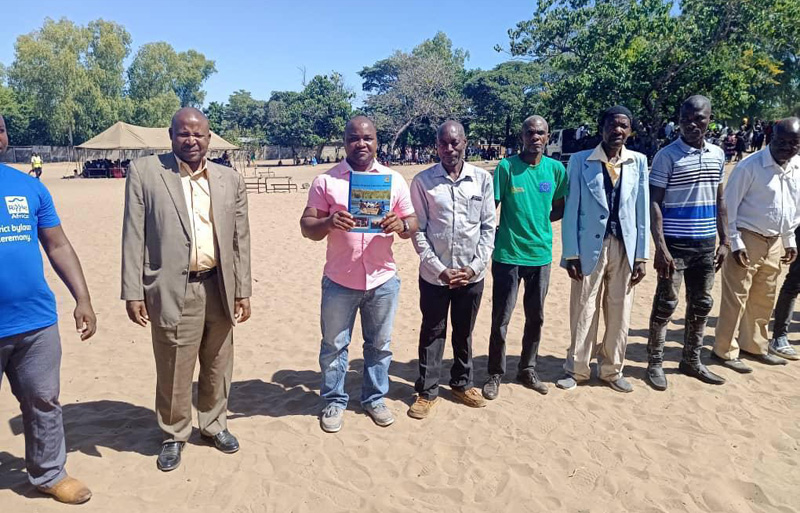 Salima District dignitaries holding the signed fisheries bylaws. Salima District dignitaries holding the signed fisheries bylaws.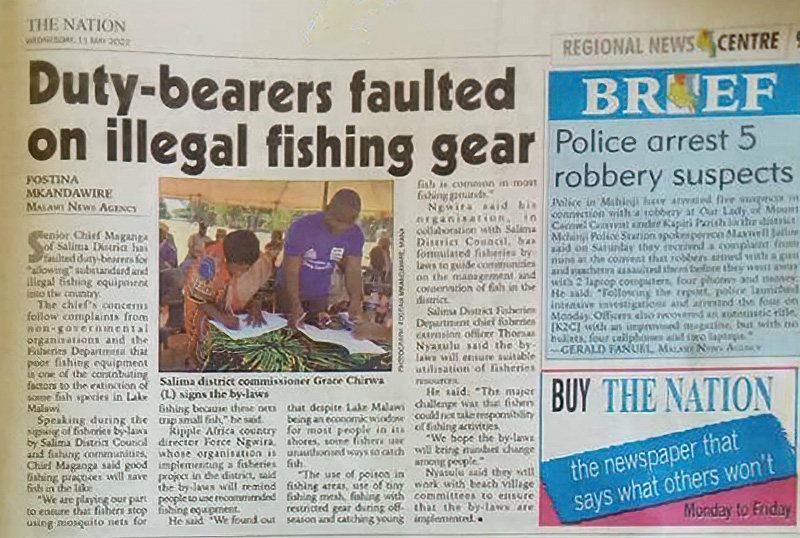 The Nation's report about illegal fishing gear entering Malawi and the signing of the Salima District bylaws The Nation's report about illegal fishing gear entering Malawi and the signing of the Salima District bylaws |
Ripple Africa has done so now in the Nkhata Bay District and in the Nkhotakota District. They bring together all stakeholders to agree to a plan for the district. New fishing bylaws are drawn up, volunteer Beach Village Committees are established and are empowered to manage the fishing in their area by making community members aware of the local bylaws, confiscating illegal nets and fining offenders. Ripple Africa is fighting an uphill battle in the southern part of the lake in the last two districts, Dedza and Mangochi, as here they have to deal with the many illegal trawlers that greatly impact the local fisherman. I think that the situation for the local fishermen can only improve when these pair trawlers can be controlled or altogether stopped operating. Since these trawlers are fishing within a few meters of the park’s no-fishing zone demarcation there is no alternative for the local fishermen then to set their gill nets in park water as they are afraid to do anything against the trawlers with their corrupt governmental backers. |
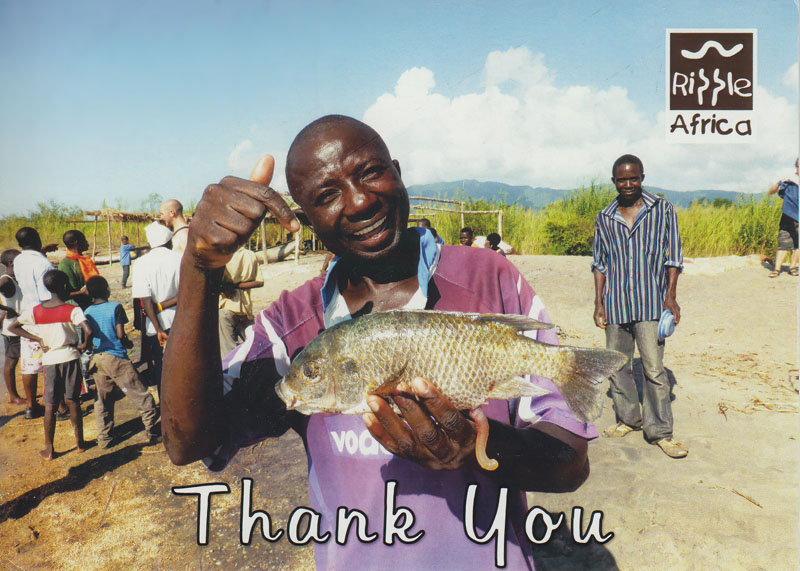 Ripple Africa has been very successful in empowering the local fisherman in the northern part of the country. Their 10-year involvement resulted in more and bigger fish for the local communities as this man is happy to point out. Ripple Africa has been very successful in empowering the local fisherman in the northern part of the country. Their 10-year involvement resulted in more and bigger fish for the local communities as this man is happy to point out. Photo by Ripple Africa. |
Thank all of you who have contributed to the Fund to conserve the cichlids in lakes Malawi and Tanganyika. Thank you! Ad Konings |
